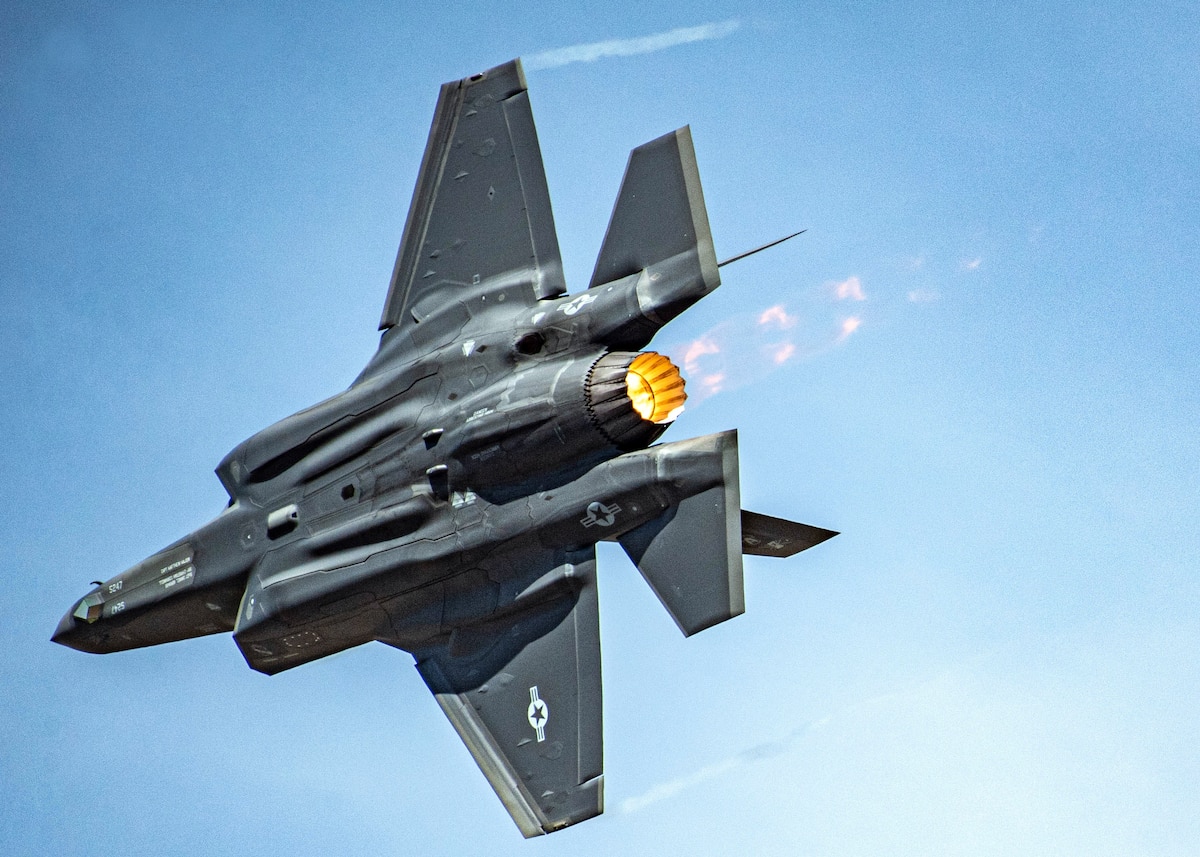In a bizarre incident involving the most advanced fighter jet of the US Air Force, an F-35’s engine ingested a hand-held flashlight, causing a loss of about US$14 million and some significant damage to the F135 engine of this stealth war machine.
The incident was reported recently, but it originally took place in March 2023 when the portable flashlight, which was reportedly left inside an engine inlet of an F-35A Lightning II aircraft, was sucked into the engine, a new accident investigation report has revealed. The negligence of ground maintenance staff allegedly caused the incident.
On March 15, 2023, the incident occurred at Luke Air Force Base in Arizona while two maintainers (MM1 and MM2) worked under the 56th Fighter Wing of the 62nd Aircraft Maintenance Unit. A third maintainer (MM3) assigned to the 187th Aircraft Maintenance Squadron on a long-term training tour with the 62 AMU was supervising the work.
The F-35A aircraft in question is flown by the 56th Fighter Wing and is registered with tail number 14-5103.
So, last year on March, a maintainer left a flashlight inside the inlet of an F-35A. The flashlight was "sucked into the engine during a maintenance ground run"
It caused nearly $4M worth of damage. Also, the engine was damaged badly enough that it couldn't be repaired locally. pic.twitter.com/S4gyrcI89c— Doha (@Doha104p3) January 19, 2024
The report of the said investigation, which was made public on January 18, found that the primary cause of the accident—severely damaging the US$14 million engine to the point that it could not be fixed locally—was the maintainer’s disregard for joint and Air Force regulations.
However, another significant contributing element to the accident mentioned was the Autonomic Logistics Information System malfunction on the F-35. Although ALIS is designed to integrate technical data, training, supply chain management, operations, maintenance, prognostics, and customer support services, it has encountered several challenges, including poor interface design and a lack of real-time connectivity.
The report observed that “the substantial number of checklists and difficulty in accessing the correct ones causes complacency when users reference the required maintenance procedures.”
What Really Transpired?
A three-person maintenance crew was working on an F-35 to fulfill a Time Compliance Technical Directive when the incident occurred on March 15. The task involved “installing a metering plug into an engine fuel line and conducting a leak check on the new metering plug while the engine was running,” according to the report.
Following the installation of the plug, one maintainer checked the inventory of tools, and then another inspected the engine as part of “Before Operations Servicing.” To accomplish this, the maintainer examined the engine inlet with a flashlight and placed it on the intake lip.
After completing the engine examination, the maintainer ran the engine for five minutes to look for fuel leaks. The team claimed to have heard strange noises as the engine shut down, even though the cockpit had no signs of damage from a foreign item.
While the maintainer who finished the first tool inventory check performed another inspection and noticed a missing flashlight. This maintainer, who ran the engine, carried out another check and found the damage.

In the end, the engine’s high-pressure compressor (HPC), high-pressure turbine (HPT), fan inlet variable vane, fuel nozzle, bypass duct, second-stage, third-stage, fifth-stage, and sixth-stage rotors—worth US$3,933,106—were all damaged.
Investigators discovered that the maintainer who performed the inspection before the engine run disregarded Joint Technical Data instructions to make sure all engine inlets and exhausts were clear of foreign and loose objects and to remove any open things before entering the aircraft inlet.
Additionally, the Airman disregarded the Department of Air Force’s directive to “perform a visual inventory” of the tool kit following the completion of each operation.
“I find, by a preponderance of the evidence, that the mishap was caused by MM1 not executing a complete inlet inspection and failing to conduct a tool kit inventory before engine run operations,” Colonel Sean Brammer-Hogan, President of the Accident Investigation Board, stated.
Lastly, the study discovered that the 62nd Aircraft Maintenance Unit’s local procedure did not strictly adhere to DAF guidelines, which demand that the person renting the tool kit perform visual inventory checks. Instead, the inventory check was typically carried out by the person running the engine in the unit. Consequently, both Airmen engaged in the incident believed the flashlight was lost.
Investigators also pointed to significant contributing factors related to issues with the F-35’s Autonomic Logistics Information System, or ALIS. The board discovered that among the problems mentioned were a deficiency of real-time network connectivity and an overabundance of unrelated data that led to user complacency.
The mishap’s ALIS element presents another challenge for the F-35’s troublesome sustainment program. Legislators have previously voiced dissatisfaction with ALIS due to the program’s high expenses and technical issues. The Joint Program Office has been working on a new “Operational Data Integrated Network” for the past four years, but authorities have characterized it as a gradual process.
Although the incident is undoubtedly as bizarre and unwarranted as possible, it is not the first time an F-35 has been involved in an unusual incident. The F-35s have been into several crashes involving bizarre incidents over the years. While the aircraft remains in demand globally, these incidents have left the US with a red face.
- Contact the author at sakshi.tiwari9555 (at) gmail.com
- Follow EurAsian Times on Google News